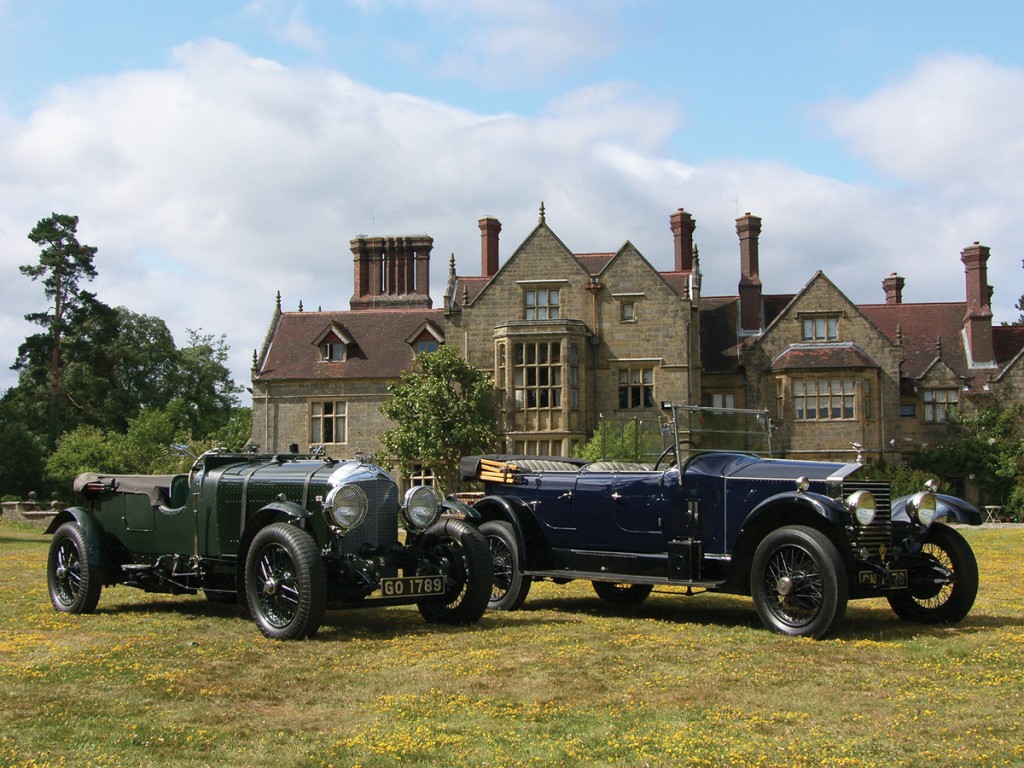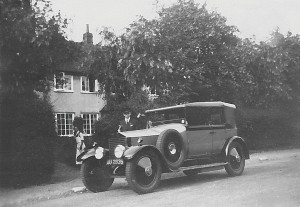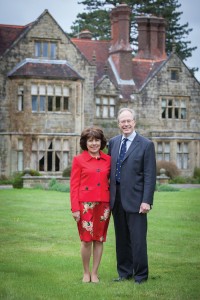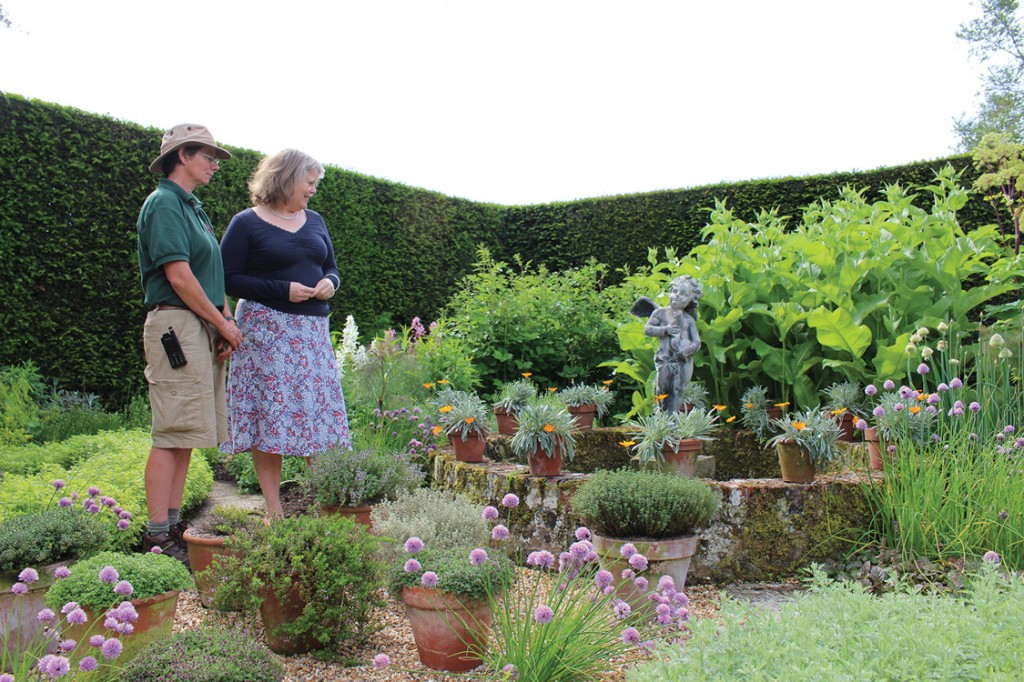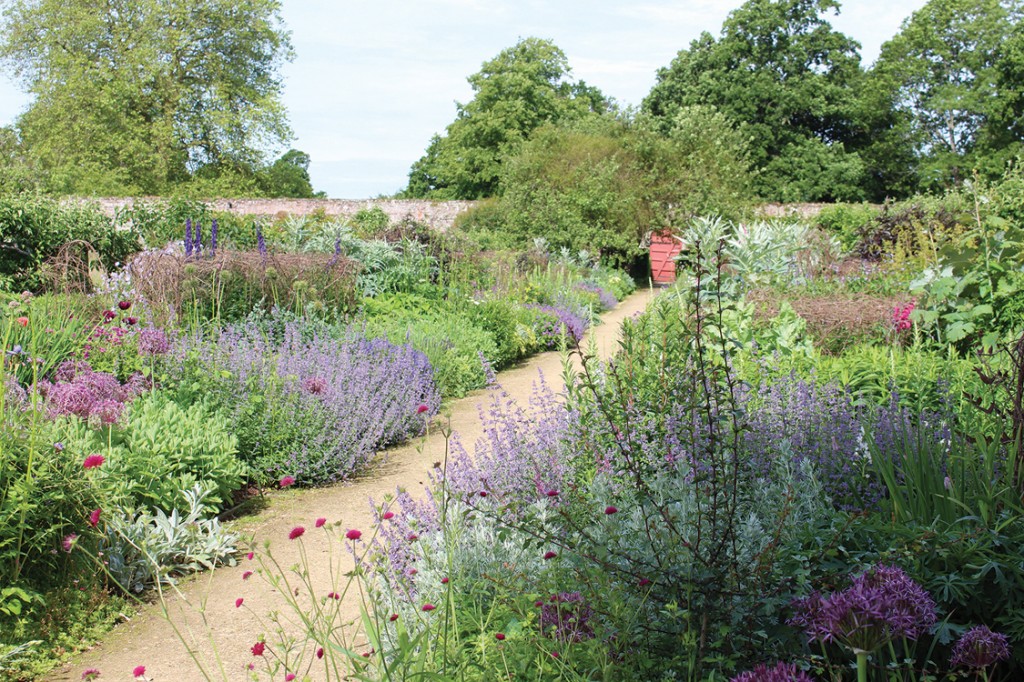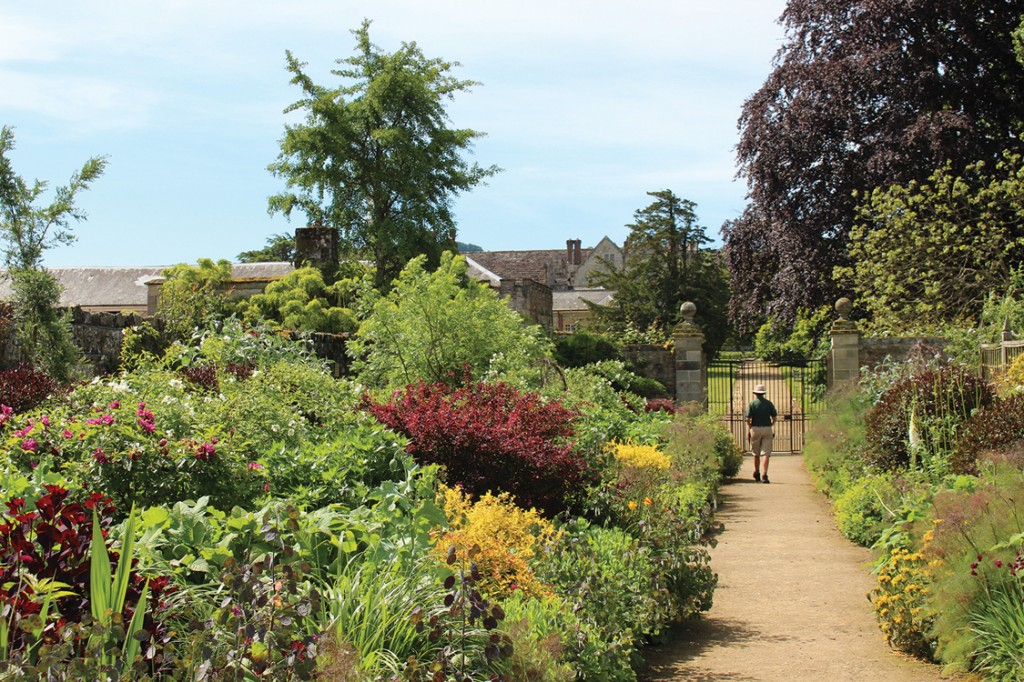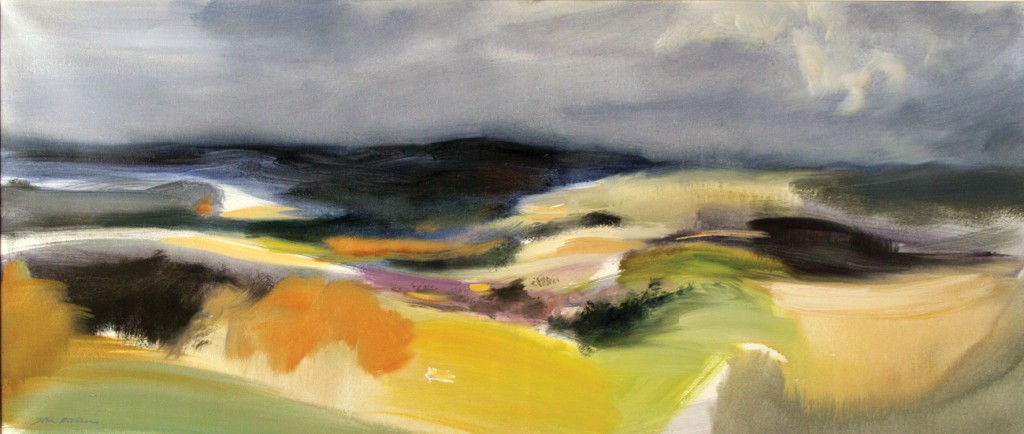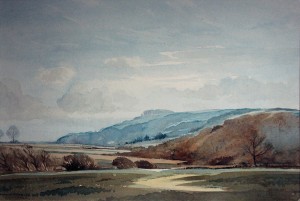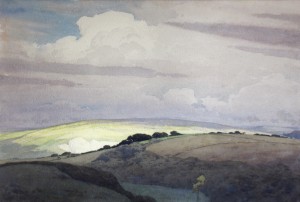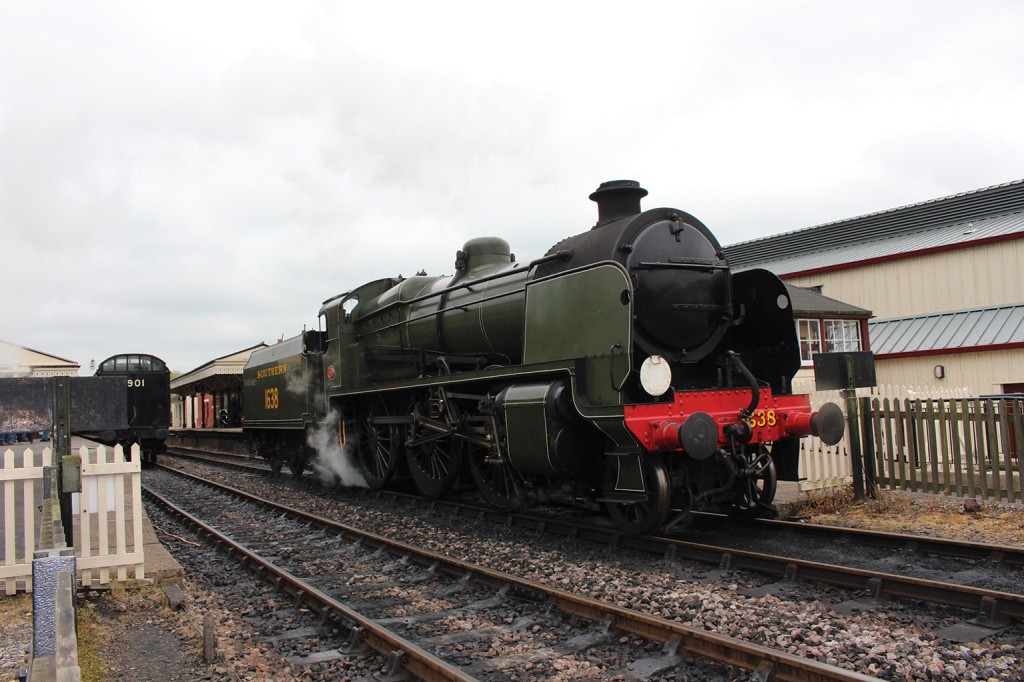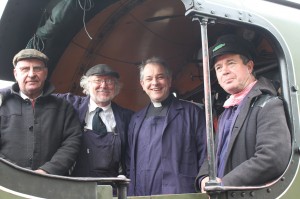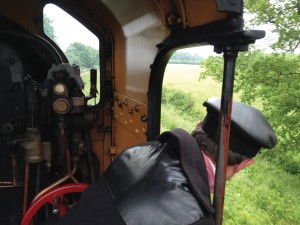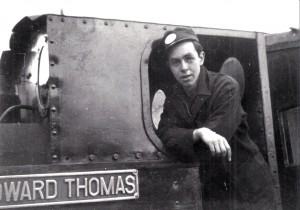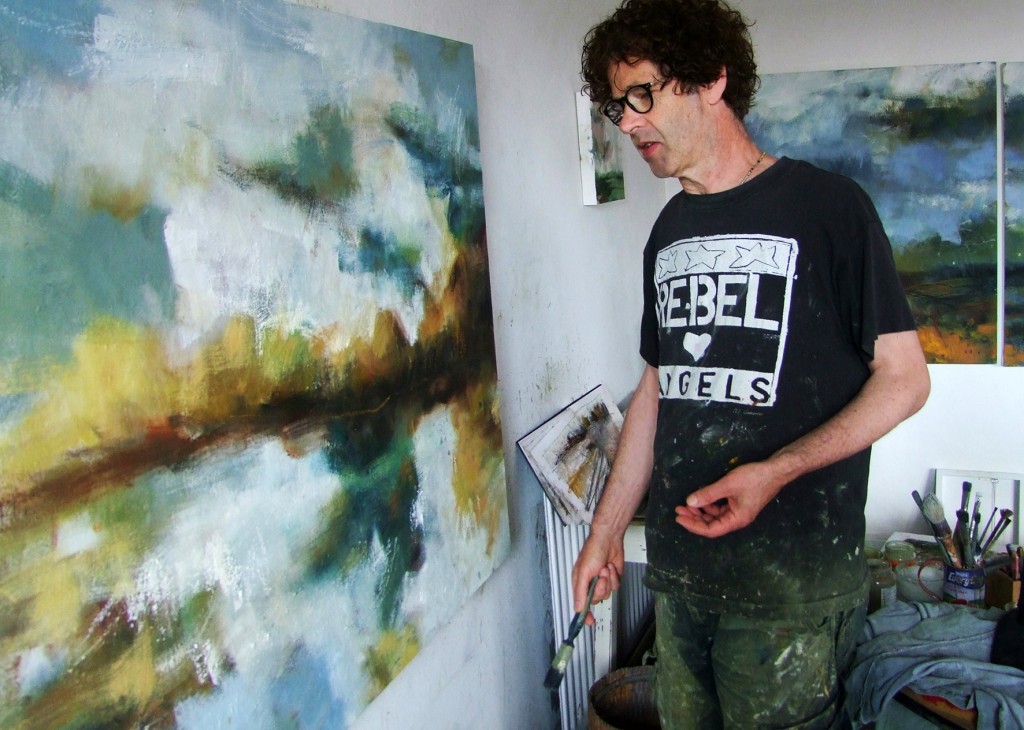
This weekend sees the start of the 26th Arundel Gallery Trail and among the participating artists is Andy Waite, whose home at 54 Tarrant Street will once again be given over to an exhibition of his work.
I am visiting Andy as he puts the final touches to the exhibition. There appears to be an ordered approach, which speaks of a generous and enabling discipline. I ask him about his working method. He explains that he is content to paint in his studio for days and weeks without need of contact with the outside world. Yet the inspiration for his landscapes comes from his experience of walking in the countryside. Back in the studio, he returns to his sketchbooks and photographs, constantly in the process of creating, as well as recalling his sense of a particular moment and place in the studio.
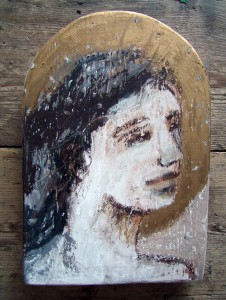
Earlier series of Andy’s icons reflected memories of his family and friends. This latest series is painted on old scaffold boards. I am interested to understand what the gold halos around these purely imagined faces mean to him. He replies: “The idea there is that everyone is special.”
Andy’s spirituality is bound up with his relationship with the landscape and those who are close to him. These qualities are apparent in his work. Both his landscapes and icons seem to be connected with the 19th century Romantic tradition in art and literature, which witnessed a return to the hopeful belief in the goodness of humanity and the grandeur and power of nature. Its celebration of our senses and emotions sought to balance our reason and intellect.
As we walk upstairs past a series of landscapes, I remark on Andy’s depth of vision. His skilful handling of rich, layered oil paint strikes the viewer’s eye with a particular intensity as each scene unfolds in our imaginations. He responds, “Although I paint for myself, as a creative person it is always with the desire to share my experience of the world with other people. My landscapes don’t tell you the whole story immediately but reveal new insights over time.” Certainly, as you take time to stare and to inhabit his paintings in your imagination, you will find that your perception of the scene will change and evolve as more of the artist’s vision and experience of that particular moment and place is revealed. You will find an honesty in Andy’s work, which reflects both the joys and sorrows of our human experience in the world.
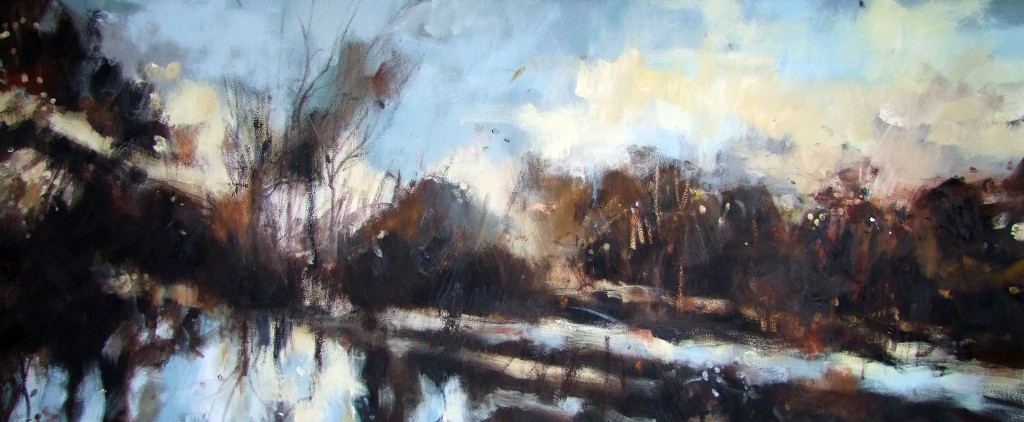
So what is it like for this contemplative artist to open his doors to Arundel Art Trail visitors, given that his work represents such a personal, connected view of the world and his relationship with it? “It’s actually okay,” he remarks. After a pause, he continues: “It may seem a strange thing to invite strangers into your home. Although it’s hung like a gallery, it is our personal living space. I enjoy it – people’s feedback gives you a real sense of their engagement with your work.” The relationships between the artist and the world and the artist and the patron clearly feed and affirm Andy and his work. My eye is drawn to a large canvas hanging in his studio, titled ‘A Million Beating Wings’. There is a musical quality in its depiction of this winter scene. The vanilla clouds dancing against the cold blue sky are reflected in the lake below, connected by the drama of the trees moving in the cool breeze, which you can all but hear and feel. The composition, light, palette and handling of paint is wonderful. Although abstracted, the subject is still apparent.
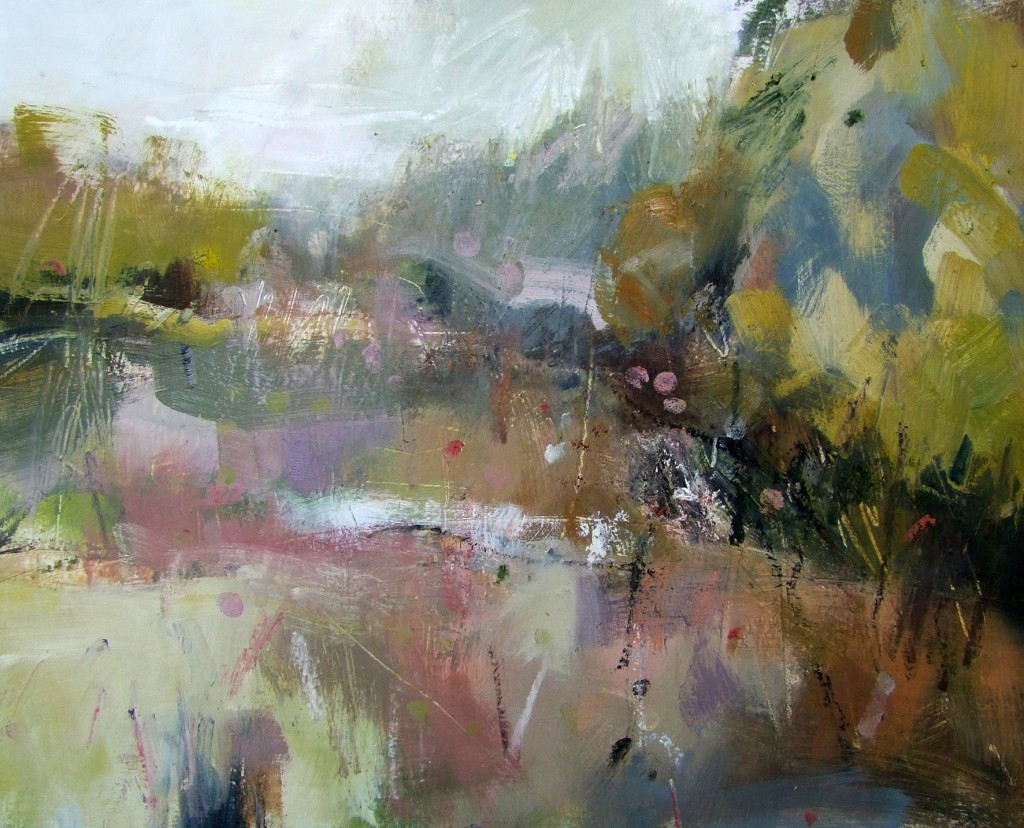
Andy Waite’s work has been described as being united with the English Romantic tradition and he acknowledges this, pleased by the sense of place in the procession of artists which includes John Constable, Ivon Hitchens, Graham Sutherland and many others. John Piper considered his fellow artist Paul Nash to be part of this tradition. Nash, however, was keen to emphasise the ‘poetic’ in his work. He sought to look beyond the immediate to what he referred to as the ‘genius loci’, the spirit of the place, to ‘a reality more real’. This resonates with Andy Waite’s work. Andy describes himself as an occasional poet but I would say that the poet is at play in all his work, which is united by the ‘poetic’, whether that be in his oil paintings, their titles, his writing or his film-making. Certainly as an artist, he returns again and again to the poetry of the English landscape and the people close to him in his life.
It is not often people have such unmediated contact with an artist and it is very special to accompany Andy Waite and his work at his home. Andy Waite’s solo exhibition as part of the Arundel Gallery Trail runs from this Saturday 16th to Monday 25th August at 54 Tarrant Street, Arundel, West Sussex BN18 9DN. For more information go to www.andywaite.net or www.arundelgallerytrail.co.uk.
By Revd. Rupert Toovey. Originally published on 13th August 2014 in the West Sussex Gazette.
